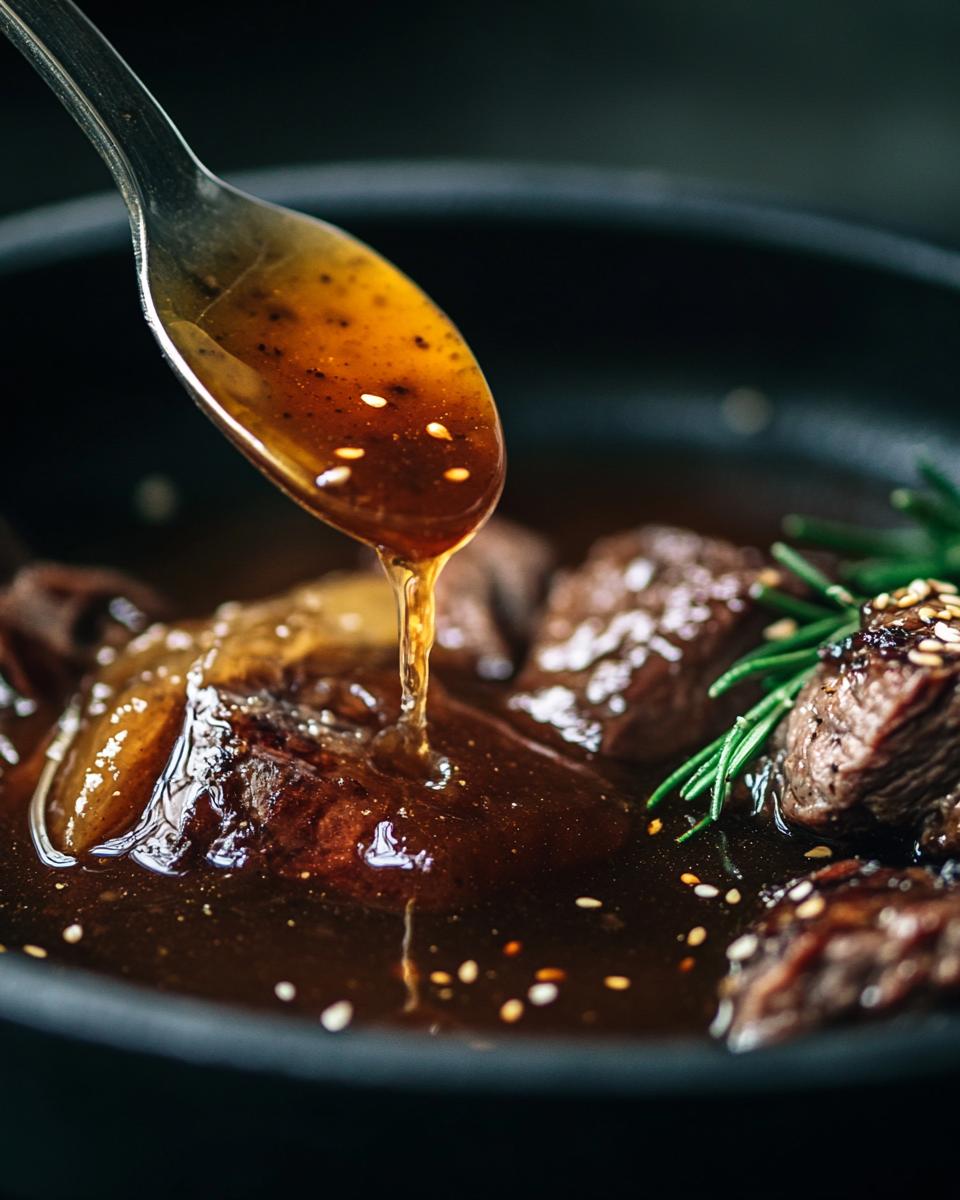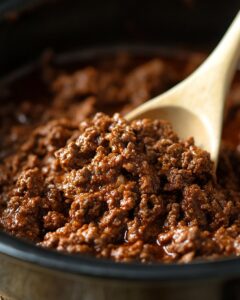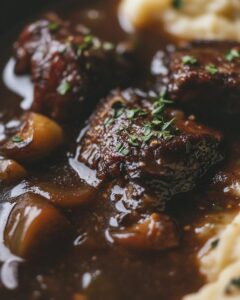Brown Sauce Recipe: The Ultimate Guide to Elevate Your Meals
Are you looking to elevate your dishes with a versatile and delicious secret ingredient? This brown sauce recipe is exactly what you need. It’s a fantastic way to add a burst of flavor to any meal, making ordinary dishes extraordinary. Whether you’re grilling, roasting, or sautéing, this sauce will quickly become your go-to condiment.
In this recipe:
- Ingredients for the perfect brown sauce
- Step-by-step instructions
- Pro tips for flavor enhancement
- FAQs for common queries
- Creative variations to try
Imagine drizzling this rich, savory sauce over your favorite grilled meats or using it as a dip for crispy fries. The possibilities are endless. If you’re intrigued by unique sauce recipes, you might also enjoy our Vietnamese Peanut Sauce. It’s another great way to add excitement to your culinary repertoire.
Not only is this brown sauce incredibly tasty, but it’s also easy to make. You likely already have most of the ingredients in your pantry. For those who enjoy experimenting with flavors, check out our Wendy’s BBQ Sauce Recipe. It’s a fan favorite that reveals a surprising secret ingredient.
Ready to transform your meals? Let’s dive into this simple yet flavorful brown sauce recipe and make your dishes stand out!
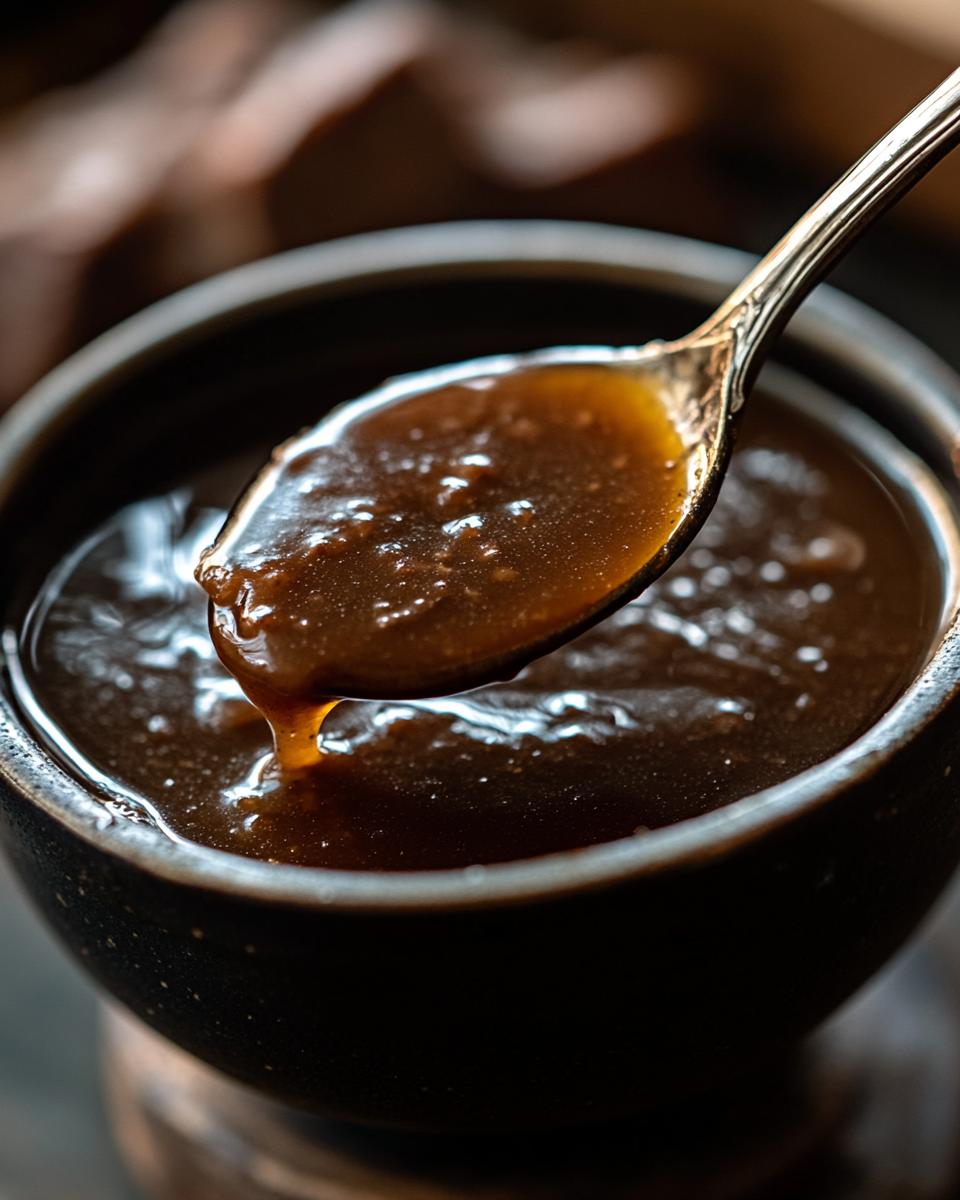
Who Can Make This Recipe and What You Need
Wondering if you can whip up this delicious brown sauce at home? Absolutely! This recipe is designed for home cooks of all skill levels. Whether you’re a beginner just starting your culinary journey or an advanced cook looking to add another gem to your repertoire, this brown sauce is perfect for you.
One of the best things about this recipe is that it uses simple, accessible ingredients that you likely already have in your pantry. No need for a special trip to the store. The ingredients for brown sauce include basic staples like ketchup, brown sugar, apple cider vinegar, and Worcestershire sauce. These everyday items come together to create a sauce that’s both versatile and rich in flavor.
Essential Tools You’ll Need
You don’t need a fully stocked kitchen to make this brown sauce. All you need are a few basic tools:
- A medium saucepan
- A whisk
- Measuring cups
These tools are sufficient to help you create a smooth, well-incorporated sauce. The medium saucepan will allow you to simmer the ingredients to perfection, while the whisk ensures a lump-free, cohesive mixture. Measuring cups will help you get the proportions just right, ensuring a balanced flavor in your sauce.
But what makes this brown sauce truly shine is its versatility. Not only is it great for dipping and drizzling, but it also works wonderfully as a brown sauce for stir fry. Imagine tossing it with your favorite veggies and proteins for a quick, flavorful meal. It’s an all-purpose recipe that can elevate any dish, making it a must-have in your kitchen arsenal.
Ready to get started? Gather your ingredients and tools, and let’s dive into the process of how to make brown sauce at home. You’ll be amazed at how easy and rewarding it can be!
Ingredients Needed to Make Brown Sauce
Now that we’ve discussed the minimal equipment needed, let’s dive into the heart of our recipe: the ingredients. Choosing the right ingredients is crucial for achieving the perfect outcome in this brown sauce recipe overview. Each component brings a unique flavor, ensuring your sauce is both rich and balanced.
Gathering Your Ingredients
Let’s look at what you’ll need for this basic brown sauce recipe. Are you ready to gather your items?
Here’s the list:
- 1 cup ketchup
- 1/2 cup brown sugar
- 1/4 cup apple cider vinegar
- 2 tablespoons Worcestershire sauce
- 1 tablespoon soy sauce
- 1 teaspoon mustard powder
- 1/2 teaspoon salt
- 1/4 teaspoon black pepper
- 1/4 cup water
- 1/4 cup beef broth (optional)
Each of these ingredients plays an important role. Ketchup forms the base, offering a thick and tangy foundation. Brown sugar adds sweetness, while apple cider vinegar brings a subtle acidity. Worcestershire and soy sauces enhance the umami flavor, making this basic brown sauce recipe stand out. Don’t forget the mustard powder, salt, and pepper to season it to perfection.
Water and beef broth help achieve the desired consistency. Want a vegetarian version? Simply skip the beef broth!
Gather these ingredients, and you’re halfway to creating a delicious brown sauce that will elevate any dish!
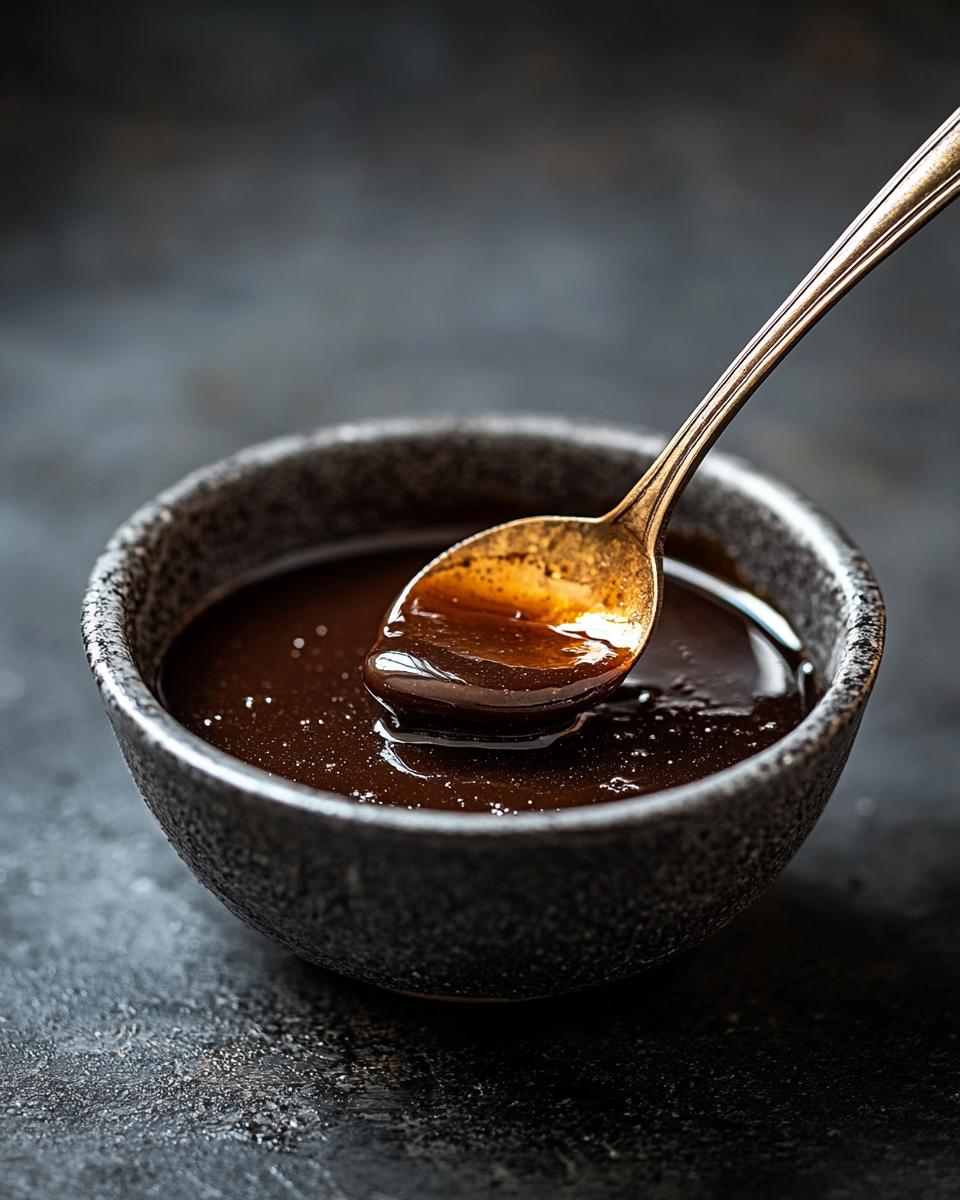
Step-by-Step Guide on How to Make Brown Sauce
Now that we’ve gathered all our ingredients, it’s time to dive into how to make brown sauce at home. This process is straightforward and rewarding, giving you a delicious condiment that elevates any dish.
- Combine Ingredients: In a medium saucepan, combine ketchup, brown sugar, apple cider vinegar, Worcestershire sauce, soy sauce, mustard powder, salt, and black pepper. Whisk these together until well combined. This mixture forms the base of your brown sauce.
- Add Liquids Gradually: Gradually add water and beef broth (if you’re using it), whisking constantly to prevent any lumps. This step ensures a smooth consistency for your sauce.
- Bring to a Boil: Place the saucepan over medium-high heat and bring the mixture to a boil. Once it’s boiling, reduce the heat to low. This is a crucial step in many techniques for cooking brown sauce.
- Simmer and Stir: Let the sauce simmer for 20-25 minutes. Stir occasionally as it thickens and reduces by about half. This simmering process allows the flavors to meld perfectly.
Simmer and Thicken
After these steps, your brown sauce should be thick, flavorful, and ready to enhance your favorite dishes. Let it cool to room temperature before transferring it to a jar or container. You can refrigerate it for up to two weeks. Enjoy the fruits of your labor and savor the rich taste of homemade brown sauce!
Serving and Storing Ideas and Tips
Now that you’ve mastered the simple steps to make this delightful brown sauce, let’s dive into how you can serve and store it. Whether you’re a beginner or a seasoned cook, these tips will ensure that you get the most out of your homemade sauce.
Serving Brown Sauce
This versatile brown sauce pairs wonderfully with a variety of dishes. Try using it as a brown sauce for chicken, drizzling it over grilled or roasted chicken for a burst of flavor. It also works great as a brown sauce for vegetables. Simply toss your favorite steamed or roasted veggies in the sauce for an added savory kick.
You can also get creative with serving brown sauce as a condiment for sandwiches or burgers. Its rich, tangy flavor complements the savory ingredients perfectly. If you enjoy dipping sauces, use this brown sauce as a dip for fries or fresh veggies. The possibilities are endless!
To serve, simply reheat the sauce gently on the stove or in the microwave. Stir occasionally to ensure an even temperature. Pour it over your favorite dishes or serve it on the side for dipping.
Storing Brown Sauce
Proper storage is key to maintaining the sauce’s flavor and consistency. Once your sauce has cooled to room temperature, transfer it to a clean, airtight container. Refrigerate the sauce for up to 2 weeks. If you want to keep it longer, you can freeze it for up to 3 months. Just make sure to thaw it overnight in the refrigerator and reheat it gently before serving.
Always use a clean spoon to scoop out the sauce to prevent contamination. If you notice any changes in color, texture, or smell, it’s best to discard the sauce.
With these serving and storing tips, you can enjoy your homemade brown sauce anytime. Whether you’re enhancing the flavor of chicken, vegetables, or using it as a versatile condiment, this sauce is sure to become a staple in your kitchen.
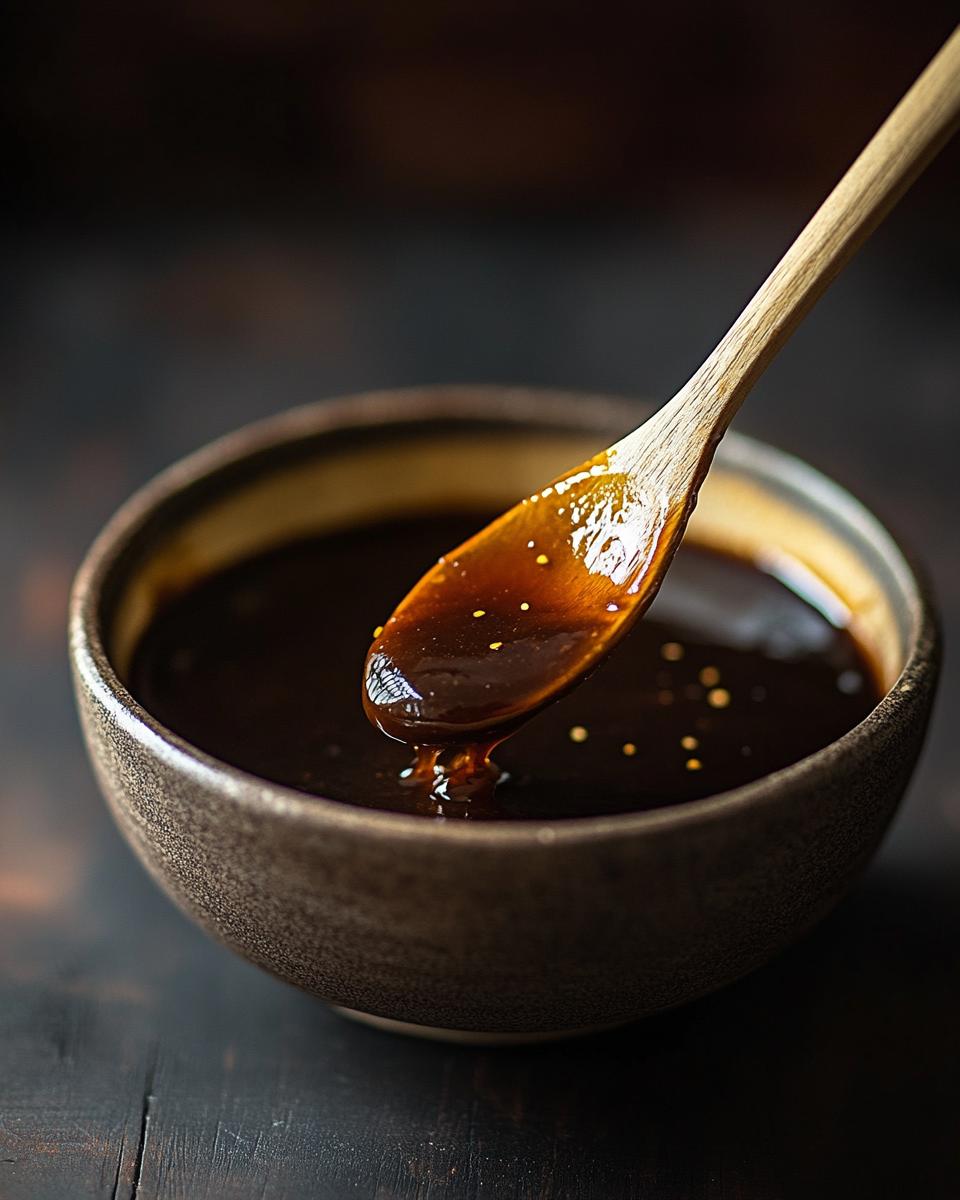
Pro Tip
- Always use high-quality ketchup and Worcestershire sauce for best flavor.
- For a thicker sauce, simmer longer to reduce it further.
- If too thick, add more water or broth to thin it out.
- Adjust the brown sugar for desired sweetness in your brown sauce recipe.
- Consider adding cayenne pepper or hot sauce for extra heat.
- Use a whisk to combine ingredients smoothly and avoid lumps.
- Let the sauce cool completely before storing it in the fridge.
- Freeze in small portions to use as needed without waste.
- For a smoky flavor, add a few slices of cooked bacon.
- Incorporate diced onions for extra depth and texture.
FAQ and Ingredient Replacement Options
We understand that you might have some questions regarding making brown sauce. Here are some frequently asked questions along with detailed answers to help you out:
FAQ Brown Sauce
Q1: Can I replace apple cider vinegar with another type of vinegar?
A1: Yes, you can replace apple cider vinegar with white vinegar or red wine vinegar for a different flavor profile. Each type of vinegar will impart a unique taste, so feel free to experiment based on your preference.
Q2: What can I use if I don’t have beef broth?
A2: If you prefer or don’t have beef broth, you can use chicken or vegetable broth instead. This will slightly alter the flavor, but the sauce will still be delicious and versatile.
Q3: How can I adjust the sweetness of the sauce?
A3: You can adjust the amount of brown sugar based on your personal taste preference. If you prefer a less sweet sauce, reduce the brown sugar. Conversely, add a bit more if you like it sweeter.
Ingredient Replacement Options
Sometimes, you might not have all the ingredients on hand or want to tweak the recipe a bit. Here are some ingredient replacement options and money-saving tips:
Q1: Can I use a different type of mustard?
A1: Yes, you can use Dijon mustard or whole-grain mustard instead of mustard powder. This will add a slightly different flavor and texture to your sauce.
Q2: What can I use if I don’t have Worcestershire sauce?
A2: If you don’t have Worcestershire sauce, you can use soy sauce with a splash of lemon juice as a substitute. This will provide a similar umami taste.
If you are looking for more detailed information and variations of brown sauce recipes, check out this comprehensive guide on The Spruce Eats.
By making these simple ingredient swaps, you can customize your brown sauce to suit your taste and pantry availability. These tips also help you save money by using ingredients you already have at home.

